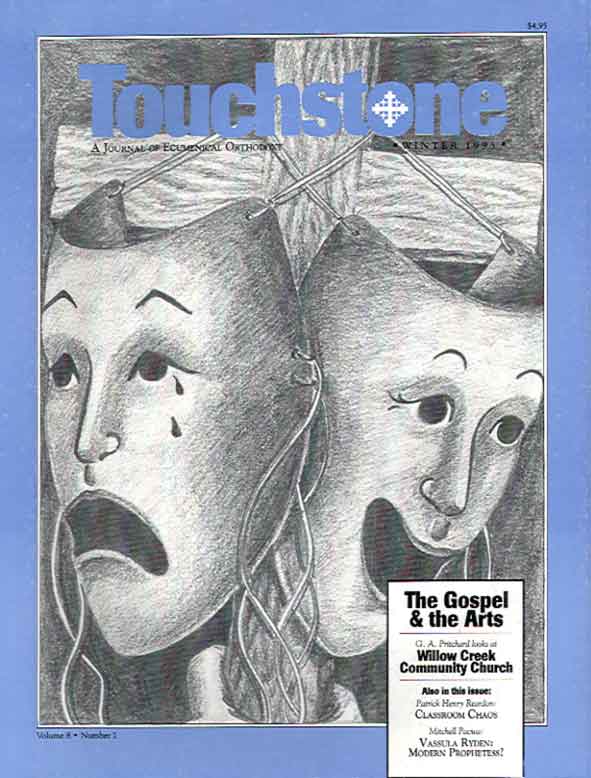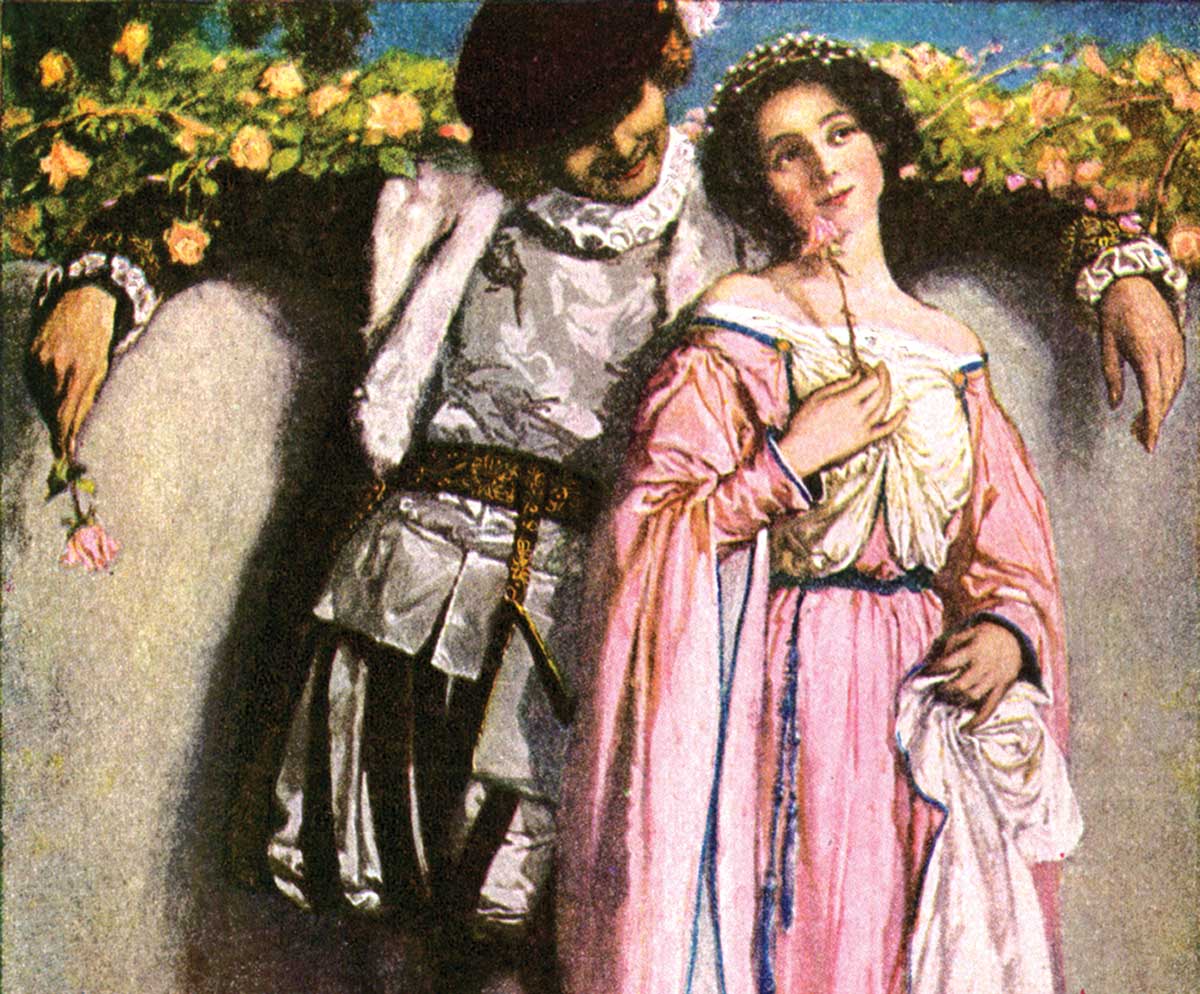That We Live a Quiet & Peaceable Life
An Appreciation of Justice Byron R. “Whizzer” White
by Vincent J. Horkan
At his inauguration President Kennedy’s fellow New Englander and personal poet laureate, Robert Frost, advised him to be more “Irish” than “Harvard.” A fellow Catholic like myself might have paraphrased the advice in this way: Be more “Catholic” than “secular humanist.”
Kennedy’s religious background surely was a major issue in his 1960 presidential campaign. Hence, even at this late date, these questions might reasonably be asked: Was religion a significant factor in his rather brief tenure as President? Did the Catholic President emphasize a religious ethic in his government? Was God given a prominent place in the public square?
While I doubt that President Kennedy took Poet Frost’s advice—or the paraphrased version—very seriously, it is my contention that Kennedy made at least one notable contribution to the cause of religion in public life. And this was the appointment of an Episcopalian, Byron R. White, to the Supreme Court. I am not suggesting that the young president had the religious factor in mind when he nominated White in March 1962. He was recognizing a tested friendship and repaying a political debt.
The friendship had extended back to their meeting in England in 1939. White was attending Oxford as a Rhodes scholar; Kennedy was residing there, the son of Joseph P. Kennedy, the American ambassador. The outbreak of the war intervened in this early relationship but over the next 23 years, their careers intertwined remarkably. As naval officers they met in the South Pacific where White in Navy intelligence wrote up the report on the sinking of Kennedy’s PT–109. After the war, following White’s graduation from the Yale Law School, they were together in Washington, D.C. White was serving as law clerk to Chief Justice Fred Vinson; Kennedy was a first-term congressman from Massachusetts. Their relationship reached a climax in 1959 when White, as a member of one of Denver’s most prestigious law firms, agreed to actively support Kennedy’s presidential bid. He did so as chairman of “Citizens for Kennedy” at the Democratic convention in 1960 and in the campaign that followed.
In the new administration, White first served as deputy attorney general under Robert Kennedy. A year later his appointment to the Supreme Court won quick Senate approval. At his appointment the President paid tribute to the new Justice as a man who had excelled in all the serious endeavors of his life. Kennedy was not just indulging in rhetorical hyperbole. At the University of Colorado, White had been an athlete and scholar. As a football player there, he was named on Grantland Rice’s All America Team. After a two-year career as a professional in the N.F.L., he was named to the Football Hall of Fame. His scholarly achievements were manifest. He was a Rhodes Scholar and attained high honors at the Yale Law School. As a judge, scholar, athlete, man of action, Byron White was surely an embellishment to Kennedy’s “New Frontier.”
I have seen no references by the young President to the moral principles and religious tolerance that would give direction to White’s career on the Supreme Court bench. Perhaps following the 1960 campaign, it was politically correct for Kennedy not to mention these attributes; perhaps they were not uppermost in the President’s mind. In any case, a serious review and study of Justice White’s 31 years on the bench will demonstrate his endorsement of the Judeo-Christian tradition in American life over against secular humanism. This can be substantiated by his opinions and decisions in two critical areas: the Supreme Court cases involving the establishment and free exercise clauses of the first amendment, particularly as they apply to public and private religious schools; and abortion cases.
It must be clearly understood that White as Supreme Court Justice did not approach these cases from an ideological or political position. Rex E. Lee, later president of Brigham Young University, served as his law clerk shortly after White’s appointment to the Supreme Court. He has a profound respect for “Mr. Justice White’s” judicial competency and integrity. Lee points out that members of the other political branches, particularly the legislature, are “popularly elected, responsive to the will of the people through periodic reelection, and their job is to make a policy.”
He continues:
The role of the judge by contrast should be to decide cases. To be sure, judges make law and policy, but they do it in the context of deciding individual cases and controversies. . . . In my view that is the legitimate standard for assessing the performance of any federal judge. And by that standard, Justice White belongs with the best. By the time of his retirement after more than three decades of deciding cases, we knew his view on abortion, the majority’s three-part test for deciding establishment of religion cases. . . . But this came about not because he characterized himself as a liberal or conservative and then did his judging consistent with what a good liberal or good conservative would be expected to do, or because in any other respect he started from some predetermined policy position. Rather these views have evolved over time as he exercised the only authority that the constitution vests in Article III judges: “to decide cases and controversies.”
Church-State Cases
Consider first some of the more notable votes and opinions of Byron White that apply the first amendment’s non-establishment and free exercise of religion clauses.
The newly appointed justice did not participate in Engel v. Vitale, the memorable case that terminated the practice of public school prayer in New York State in June 1962. However, White’s position in this area became clearly defined in cases decided years later. In 1985 in Wallace v. Jaffree, the Supreme Court struck down a program in Mobile County, Alabama, where the state authorized public schools to set aside a moment of silence in the school day during which students could meditate or pray. The Court declared this unconstitutional by a 6–3 vote.
In his dissent White joined Chief Justice Burger. White’s opinion: “It is apparent in my view the first amendment does not proscribe either statutes authorizing or requiring in so many words a moment of silence before classes begin or a statute that provides, when initially passed, for a moment of silence for meditation or prayer.” Later, in his twenty-third year on the bench, Justice White concluded: “Of course, I have been out of step with many of the Court’s decisions dealing with this subject matter, and it is not surprising that I would support a basic reconsideration of our precedents.”
In 1992 during his last year on the Supreme Court, the school prayer issue reasserted itself in Lee v. Weisman. Here the court extended the ban on state-sponsored prayer to middle and high school graduation ceremonies. The case arose in Providence, Rhode Island, whose middle and high school principals invited members of the clergy of all faiths to give invocations and benediction prayers as part of their school’s graduation ceremonies. David Weisman, the parent of a graduate, sought a permanent injunction against including prayers in public school graduation ceremonies. (A Jewish rabbi had given the invocation in the case at issue.)
David Weisman prevailed in the Supreme Court by a 5–4 margin. Justice Anthony Kennedy (a Catholic) voted with the majority. Not surprisingly, Byron White dissented, holding for the constitutionality of invocations at public school graduation ceremonies.
What about cases involving the non-establishment clause and aid to private religious schools? Again Justice White did not take an a priori secularistic interpretation of the first amendment. Here is a brief summary of such cases:
• In 1968 in Board of Education v. Allen, the Court sustained a New York State law requiring local school districts to lend textbooks free of charge to students in grades 7 to 12, including those in religious schools. Justice White wrote the majority decision of the Court expressing the views of six members.
• In 1970 in Walz v. Tax Commission, the Court upheld the practice dating to the founding of America—of granting tax exemptions to “religious organizations for religious property used for religious purposes.” Byron White concurred with the 7 to 1 majority.
• In 1971 Lemon v. Kurtzman, a landmark case, introduced a three-pronged test to establish the constitutionality of any form of aid to church-related schools: such aid must serve only a secular purpose, neither advance nor inhibit religion, and allow no excessive entanglement between government and religious schools in carrying out the program.
In Lemon the Court struck down state laws in Pennsylvania and Rhode Island that supported public school instructors who engaged in teaching secular subjects in church-related elementary and secondary schools. Chief Justice Burger wrote the opinion for the eight-man majority. Only White dissented.
• In 1973, there was The Committee for Public Education v. Nyquist. This New York program provided direct money grants from the state to qualifying non-public schools to be used for maintenance and repair of school facilities and equipment, tuition reimbursements to parents of children attending elementary or secondary non-public schools, and state income tax relief to parents of non-public school children.
The Court majority declared the program unconstitutional in all phases. White dissented. It is noteworthy that Chief Justice Burger and Justice Rehnquist joined with White in dissenting to that part of the Court’s opinion striking down tuition reimbursements and tax relief provisions. Their reasoning: government aid to individuals is generally valid despite an incidental benefit to religious schools. These same three justices also maintained that tax deductions and exemptions of parents of non-public school children are valid under the establishment clause.
• Finally in 1985, in Grand Rapids School District v. Ball and in Aguilar v. Fenton, both cases decided together, the Supreme Court struck down state and federal programs that allowed public school teachers to teach secular subjects in parochial schools. In Grand Rapids it was a shared-time program conducted by teachers who were hired by the public school system in non-public school classrooms. In Aguilar, since 1966 the State of New York had used Title I Federal programs to fund local institutions (including parochial schools) for educationally deprived children. The teachers were employees of public schools who volunteered to work in parochial schools.
In his twenty-third year on the bench, White commented:
I have long disagreed with the Court’s interpretation and application of the establishment clause in the context of state aid to private schools. For the reasons stated in those dissents, I am firmly of the belief that the Court’s decisions in these cases like its decisions in Lemon and in Nyquist are not required by the first amendment and are contrary to the long range interests of the country.
In the opinions of Justice White on this subject there is a clear acknowledgment of the positive contribution made by private religious schools to the public welfare. This is particularly evident in his rather extensive commentary in Nyquist. He points out that at the time, 1973, about 10 percent of the nation’s children, approximately 5.2 million students exercising a lawful option, were not being educated in public schools at public expense:
Under state law these children have a right to a free public education and it would not appear unreasonable of the State, relieved of the expense of educating a child in the public school, to contribute to the expense of his education elsewhere. The parents of such children pay taxes, including school taxes. . . .
In light of the Free Exercise Clause of the first amendment, this would seem particularly the case where the parent desires his child to attend a school that offers not only secular subjects, but religious training as well. A State should put no unnecessary obstacles in the way of religious training for the young. . . .
White concluded by citing Zovach and Walz: “When the State encourages religious instruction . . . it follows the best of our traditions.” Would that Catholic representatives in public life, especially on the national level, express the same appreciation of religious schools!
Abortion Cases
Kenneth Jost in an appraisal of White’s performance on the Supreme Court emphasizes his belief in judicial restraint. This was a key principle in White’s opposition to Roe v. Wade and its “companion case” of Doe v. Bolton in 1973.
In “unaccustomedly sharp language” White joins Justice Rehnquist in dissenting to the Court’s 7–2 majority: “As an exercise of raw judicial power, the Court perhaps has authority to do what it does today; but in my view its judgment is an improvident and extravagant exercise of the power of judicial review that the Constitution extends to this Court. . . .” Justice White continues:
The Court apparently values the convenience of the pregnant mother more than the continued existence and development of the life or potential life that she carries. Whether or not I might agree with that marshaling of values, I can in no event join the Court’s judgment because I find no constitutional warrant for imposing such an order of priorities on the people and legislatures of the states. In a sensitive area such as this, involving as it does issues over which reasonable men may easily and heatedly differ, I cannot accept the Court’s exercise of its clear power of choice by interposing a constitutional barrier to state efforts to protect human life and by investing mothers and doctors with the constitutionally protected right to exterminate it. This issue, for the most part, should be left with the people and to the political processes the people have devised to govern their affairs.
It is my view, therefore, that the Texas statute is not constitutionally infirm because it denies abortions to those who seek to serve only their convenience rather than to protect their life and health. Nor is this plaintiff who claims no threat to her mental and physical health, entitled to assert the possible rights of those women whose pregnancy assertedly implicates their health.
White continued to oppose the Roe v. Wade abortion rights ruling until his retirement from the bench. This is evident in his dissent to the Court’s rejection of the Pennsylvania Abortion Control Act in June 1986. The majority opinion was delivered by Justice Blackmun: States are not free under the guise of protecting maternal health or potential life to intimidate women into continuing pregnancies. Justices Brennan, Marshall, Powell, and Stevens joined in the 5–4 majority maintaining that this was an unconstitutional infringement on a woman’s fundamental right to abortion.
White joined Justice Rehnquist in his dissent, maintaining that Roe v. Wade should be overruled. In finding a constitutional right to abortion, that decision departed from a proper understanding of the Constitution.
Justice White maintained this position in the Court’s review of the Missouri regulation of abortions in 1989. Here in Webster v. Reproductive Health Services, he voted with the 6–3 majority to ban the use of tax dollars for encouraging and counseling women on the abortion procedure. He also voted with the same majority that states do possess the authority to prohibit the use of public clinics or hospitals or any other tax-supported facility for the purpose of counseling, encouraging, or performing abortions.
Finally in Planned Parenthood v. Casey in 1992, Justice White, Justice Scalia, Chief Justice Rehnquist, and Justice Thomas concluded that a woman’s decision to abort her unborn child is not a constitutionally protected liberty because the constitution says absolutely nothing about it, and the longstanding traditions of American society have allowed it to be legally prosecuted.
Justice White’s position, after 31 years on the bench, was clear: Roe v. Wade should be overturned despite the rule of “stare decisis”—the court’s practice of standing by previous decisions—a rule that is not inexorable.
A Happy Contrast
From a religious viewpoint, the record of President Kennedy’s Episcopalian appointment to the Supreme Court is in happy contrast to two prominent Catholics–Justice William Brennan and Justice Frank Murphy–who sat on that honored bench during the present century. Brennan and White were fellow justices over many years. On church-state and abortion issues they continually opposed one another. On church-state matters, Brennan viewed the government as completely secular; it should remain neutral in this area. On abortion, William Brennan voted with the majority in Roe v. Wade, and over the years he supported abortion rights and their extension as resolutely as Byron White opposed them.
Justice Murphy was on the bench in the late 1930s through the 1940s. Abortion was not on the agenda. He participated in two church-school cases, however, that have given direction to the Court’s thinking for almost 50 years. The first of these was Everson v. Board of Education in 1947 in which the Court upheld New Jersey’s public funding of transportation for both public and parochial school children. The second was McCollum v. Board of Education in 1948 in which the Court banned a Champaign, Illinois, program for released-time religious instruction. Justice Murphy voted with the majority in each case. However, in the Everson case, Justice Black succinctly stated the principle of government neutrality prohibiting the United States from favoring religion generally. His words: “Neither a State nor the Federal Government can pass laws which aid one religion or all religions or prefer one religion over another. . . .” Murphy concurred with this secular view of government with nary a word of dissent or qualification.
A personal note: Over the years friends and admirers of Justice White acknowledge his reticence and his exercise of privacy rights. (Note well his departure from the Supreme Court with no public ceremony.) My limited correspondence with him bears this out. Early in the preparation of this essay, I requested a chance to interview him in person or by letter. The retired Justice wasted no time or words in replying:
I have many requests to contribute to or participate in the preparation of articles such as you have in mind. I have not assented to any of them and should not start now. You are on your own.
Cheers,
Byron White
Justice Byron “Whizzer” White, stout character on and off the field, on and off the bench!
Msgr. Vincent J. Horkan, a senior priest of the Archdiocese of Detroit, is on the staff for Advancement of the University, Madonna University, Livonia, Michigan.
subscription options
Order
Print/Online Subscription

Get six issues (one year) of Touchstone PLUS full online access including pdf downloads for only $39.95. That's only $3.34 per month!
Order
Online Only
Subscription

Get a one-year full-access subscription to the Touchstone online archives for only $19.95. That's only $1.66 per month!
bulk subscriptions
Order Touchstone subscriptions in bulk and save $10 per sub! Each subscription includes 6 issues of Touchstone plus full online access to touchstonemag.com—including archives, videos, and pdf downloads of recent issues for only $29.95 each! Great for churches or study groups.
Transactions will be processed on a secure server.
more from the online archives
calling all readers
Please Donate
"There are magazines worth reading but few worth saving . . . Touchstone is just such a magazine."
—Alice von Hildebrand
"Here we do not concede one square millimeter of territory to falsehood, folly, contemporary sentimentality, or fashion. We speak the truth, and let God be our judge. . . . Touchstone is the one committedly Christian conservative journal."
—Anthony Esolen, Touchstone senior editor









